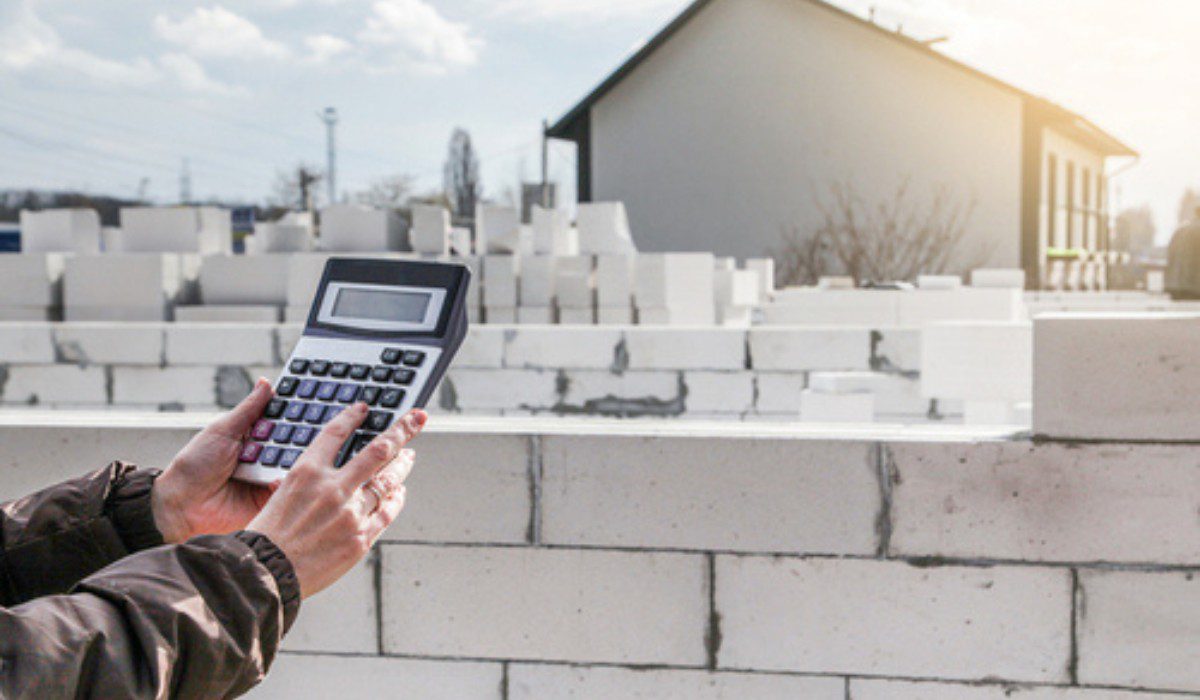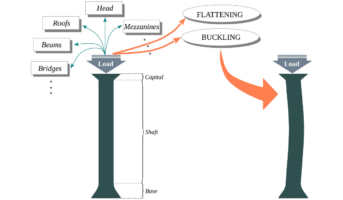A pitched roof is a roof that has two or more sides that come together in a peak at the top of the building. In Britain, most houses have two roofs. The point where these two roofs meet is called the apex or ridge. Two sets of rafters are assembled symmetrically at this point. Pitched roofs can have different styles, from modest and simple to elaborate and grand.
See also: Rafter length calculator
What is roof pitch?
The roof pitch measures the angle of the rafter in relation to the horizontal plane. This angle can be expressed as a ratio between the rise and run. The expression x:12 is used to refer to a roof pitch. For example, a 2:12 pitch means that the roof will increase by two feet, corresponding to every twelve feet increase in the horizontal length.
Roof pitch calculator: Type of roofs
Pitched roofs can be categorised into four types:
- Flat roofs: Practically, flat roofs need a slight slope to allow for water runoff. These roofs typically have a 1/2:12 to 2:12 pitch (ranging from 4.2% to 16.7%).
- Low-pitched roofs: Low-pitch roofs have a pitch of less than 4:12 (33.3%). These roofs require special materials to prevent leaks, and they can be challenging to maintain.
- Conventional roofs: The most common roof pitches range from 4:12 to 9:12, with the former being 33.3% and the latter being 75%. They’re typically the simplest roofs to construct and the safest to walk on.
- High-pitched roofs: Fasteners need to be added frequently for high-pitched roofs. Their pitch can reach a maximum of 21:12 (175%).
See also: Tile calculator
Roof pitch calculator: How to calculate roof pitch?
You probably won’t know how to calculate the pitch of your roof unless you’ve worked on roofs before or have experience in the construction industry. Although many home improvement projects can benefit from this information, your next project involving your roof will require it the most. You must be able to determine the roof’s pitch, whether you are completely replacing the roof or just adding a new roof window. For this, you can choose to calculate roof pitch in degrees as well as in the form of ratio.
How to calculate roof pitch in degrees?
There are several methods for determining the pitch of your roof, and all you’ll need is a calculator, spirit level, and measuring tape. With these tools in hand, all you need is access to your loft area and a little bit of maths knowledge to calculate roof pitch.
Step 1: Measure the run of the roof
You’ll need to start by measuring the run of your roof- this is the horizontal distance between the peak of your roof and the wall. You can use a tape measure or spirit level to get an accurate measurement.
Step 2: Measure the rise
To determine the rise, you need to find the apex of the structure- this is the point where the wall is highest above the ground.
Step 3: Calculate the tangent
Next, you need to calculate the roof’s tangent. To do this, divide the rise (the vertical measurement) by the run (the horizontal measurement). The formula is written as follows: rise ÷ run = tangent.
Step 4: Divide the tangent
The next step to calculate roof pitch is to divide your tangent by 1.
Step 5: Final Step
Lastly, multiply that number by 180/π to calculate the roof pitch.
So, the formula for Roof Pitch = (1 ÷ Tangent (Rise ÷ Run))*180/π; Here, Tangent = Rise ÷ Run
Also read: Rebar Calculator
How to calculate roof pitch in the form of a ratio?
The conventional way to measure roof pitch is by displaying it as a ratio of X:12. This is done by counting the number of inches a roof rises vertically for each horizontal extension of 12 inches. You’d need your tools and your roof space to complete this simple calculation.
- To begin, rest your spirit level against the deck of your roof and use it to find and mark the point that is 12″ away to arrive at the run.
- Now determine the distance that the top of your spirit level and the roof deck have between them. To do so, place your tape measure against the run line vertically. This would be the rise.
- You will get an X:12 ratio, which corresponds to the rise:run ratio.
- You can change this ratio to an angle if you’d like.
See also: Fence Calculator
How to use a roof pitch calculator?
A roof pitch calculator can help you determine the angle of your roof and the length of rafters you’ll need for your construction projects. This calculator is a quick and easy way to get accurate measurements for your project.
There are a ton of options available online and as smartphone apps that can help you figure out your pitch measurements without having to break out the pencil and paper. You’ll just need to input the same rise and run measurements into these calculators as you would for a manual calculation. Some of these tools are more advanced and can tell you your roof pitch simply by looking at a picture.
You can choose from several online roof pitch calculators. The best among these are Omni Calculator, My Carpentry, and Inch Calculator.
See also: Rafters meaning
What is the standard roof pitch?
There is nor universal standard roof pitch. It can vary based on climate, culture, material availability, and style. For instance, in the United Kingdom, the standard range of roof pitches can be anywhere between 40° and 50°, although 45° should be avoided. In the US, standard roof pitches range from 4/12 to 9/12. In more temperate climates, like in Italy, the angles of standard roof pitches vary between 16 and 25. Modern houses often feature ‘flat roofs’, which are not completely flat but have a roof pitch of nearly 1:40.
How does roof pitch affect the roofing cost?
The roof pitch has a major impact on the cost of replacing or installing your roof. The steeper your roof, the higher the installation cost will be. So, it is a very important aspect to consider while choosing the right roof pitch for your project. The installation of a low-slope roof may cost around 10% more than the installation of a flat roof. Similarly, a steep-slope roof may cost 20%-30% more. The installation of roofs with an extremely steep slope can cost even more. So, if you are planning to get a new roof installed, it’s advisable to get the estimates for multiple options before choosing one that’s right for your design choice and budget.
FAQs
What is a roof pitch?
Roof pitch is defined as the angle or slope of your roof. It's calculated with reference to the vertical rise of the roof (in inches) for every horizontal foot. For example, a roof with a 3:12 pitch rises 3 inches for every foot that it extends.
What is a roof pitch calculator?
The roof pitch calculator has to be one of the most fundamental construction calculators. It is used to calculate the number of shingles needed to cover a surface or the number of rafters needed for a roof frame.
What can be the minimum roof pitch required for snow?
Snow can slide off roofs that have a minimum pitch of about 30° or a 6:12 or 7:12 slope. However, the material of your roof, the direction of the snow, and the wind can all influence whether or not the snow will actually slide off. For example, some roofs as low as 10° have been reported to still shed snow.
What can be the smallest roof pitch?
A roof's pitch (angle of inclination) can be as low as 0.5/12, but having an entirely flat roof is a bad idea because water and snow will collect on it and eventually cause your roof to cave in under the weight.
What is the typical roof pitch measurement?
The most common roof pitches in the United States are 4:12, 5:12, and 6:12, which are suitable for most homes. However, the pitch of your roof may vary depending on climate, style of home, and the materials that are available in your area.
Housing News Desk is the news desk of leading online real estate portal, Housing.com. Housing News Desk focuses on a variety of topics such as real estate laws, taxes, current news, property trends, home loans, rentals, décor, green homes, home improvement, etc. The main objective of the news desk, is to cover the real estate sector from the perspective of providing information that is useful to the end-user.
Facebook: https://www.facebook.com/housing.com/
Twitter: https://twitter.com/Housing
Email: [email protected]











